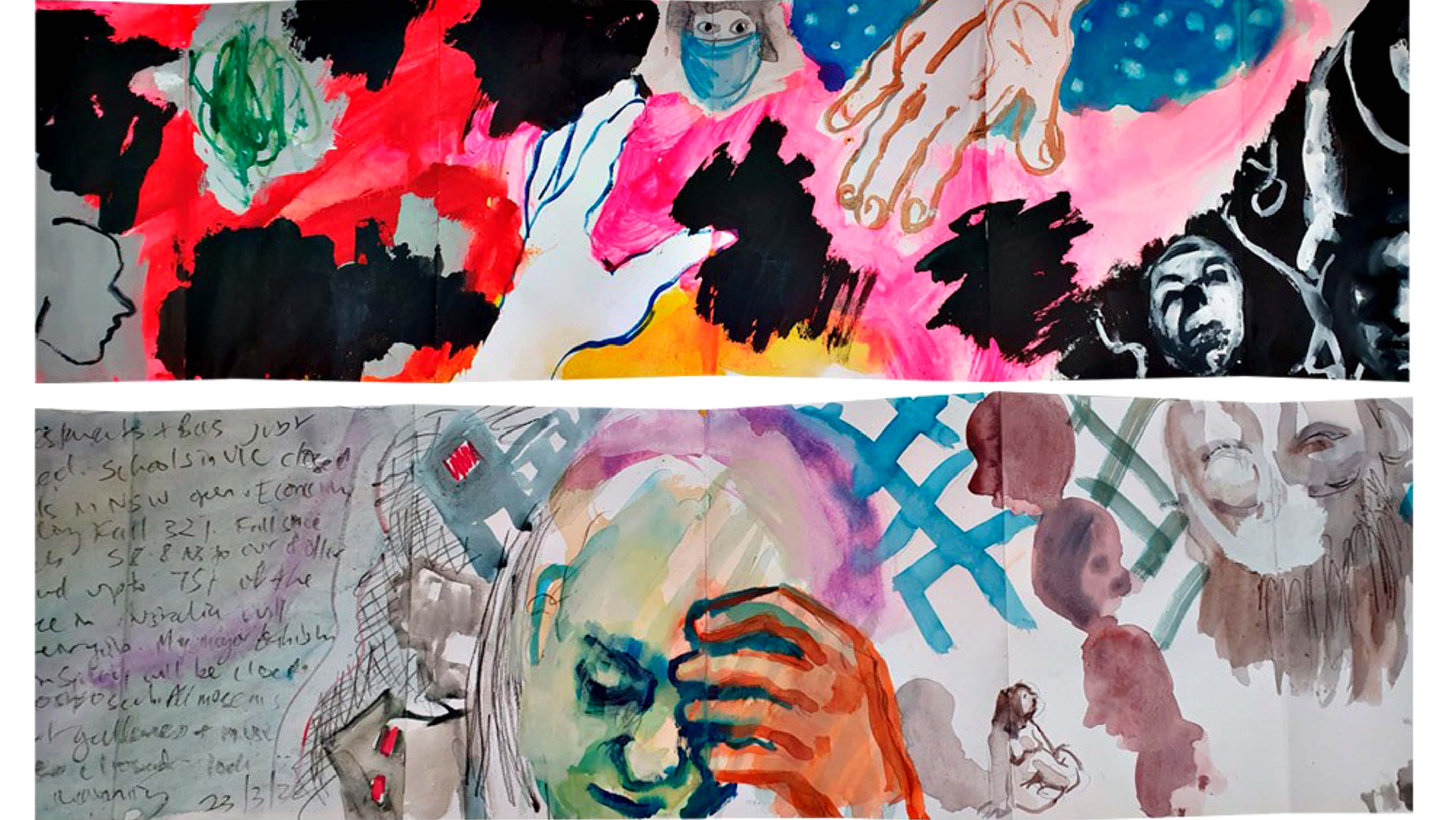
Portraits of the artists in isolation
Ten Australian artists, including Bill Henson, Ben Quilty and Wendy Sharpe, share what they have been working on during lockdown.
by Kerrie O'Brien, Nick Galvin and Chloe WolifsonFor many visual artists, solitude is a natural state. Indeed, it has long been considered that being secluded in a studio, confronting alone the challenges of their chosen medium is key to the creative process.
As Spectrum's art critic John McDonald wrote recently: "With most works of visual art, there are moments of inspiration and periods of repetitive labour. It's the ideas behind a work of art and the unexpected transformations that occur in the process of creation that seem to require solitude."
Esteemed painter John Olsen agrees, saying, "As far as isolation is concerned it's the natural state of being an artist."
Other artists have seen the influence of COVID-19 in their work, from Wendy Sharpe, who has been moved to produce tiny works exploring quarantine dreams, to Ben Quilty, who has been trying to make "stiller" pieces about human frailty, to Reg Mombassa, who painted "four alarming, melodramatic self-portraits" reflecting the general alarm and anxiety across the world.
As art galleries start to reopen, these artists opened the doors on their creative processes in these extraordinary times.
Ben Quilty: Still and calm
For Quilty, the pandemic came after an intense summer contending with the bushfires threatening his home in the Southern Highlands on every side.
Shutdown for him and his wife, Kylie, has focused on helping their two children navigate life emotionally after a traumatic six months.
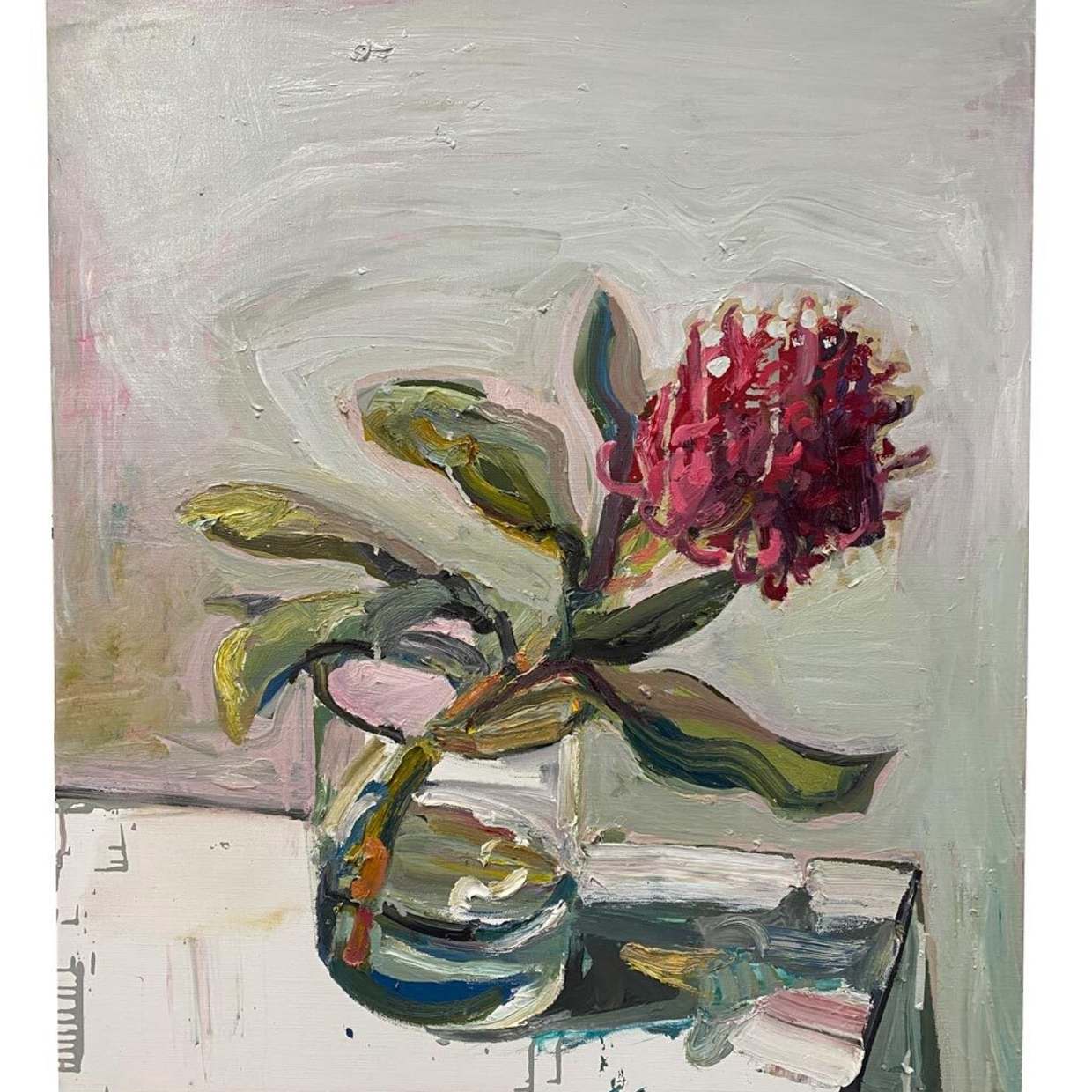
"My work has really echoed that. I've tried to calm myself and I've started trying to make much stiller works. Works about frailty, the notion of human frailty, as well as still lifes."
One artist he looked to was the Italian painter and printmaker Giorgio Morandi (1890-1964), whose work is known for the simplicity of the subjects, such as ceramic bowls and vases.
"I made works that in a sense referenced something of being on your own, examining something, sitting with yourself quietly."
Quilty has found artistic inspiration in items as diverse as a bottle of multivitamins and a can of the disinfectant Glen 20. "They were things I picked up in the kitchen that definitely weren't there three months ago."
Among his subjects, has been a waratah he grew himself. "I grew up near the Hawkesbury and after reading Kate Grenville's The Secret River, I became painfully aware of the silence of the bush. The sounds of singing, laughter, and thousands of years of human habitation had disappeared in the blink of an eye. Waratahs grow down there along the river. I harvested seeds, burnt the soil for the seedlings, grew over 100. Only one survived. It grows at my home and is like a sentinel to the memory of the silent bush. The native variety only grow a few flowers a year. This is one of them."
Contemplating simple objects, can inspire consideration of the bigger issues of the world, "the hope for the future, the celebration that will happen around the world when a vaccine is discovered, the loneliness that we feel now, the loneliness that some people felt before. Loneliness is such a part of the contemporary world and maybe now we'll really consider why is that."
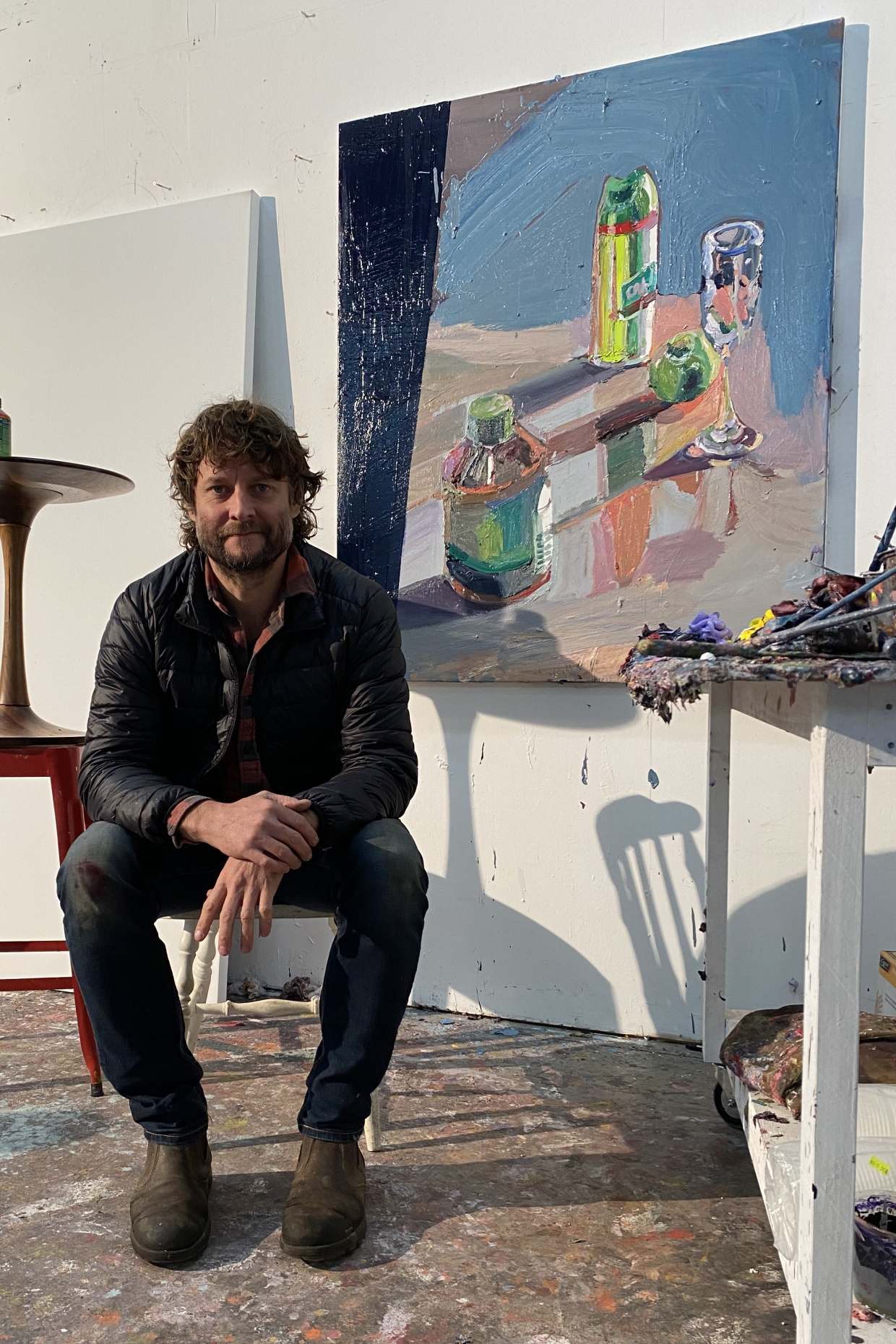
As a sideline, he and some mates have raised $6 million to establish the Southern Highlands Regional Gallery, called Ngunungulla, at Retford Park, in Bowral, set to open next year. Two nights before the shutdown, they held a fundraiser and raised almost $400,000. “We have the money in the bank and it just feels like the art gods have been looking over us.
Also under way in Quilty's studio is a massive painting entitled 2020, "which is about the end of humanity as we know it and that is screaming off the wall". He had started it before coronavirus hit, "but it definitely gained meaning in recent months".
It depicts "a single figure lying on a table, a self-portrait about the way I feel, the way world politics is derailing a healthy future".
Quilty says coronavirus has been easier for his children to manage than the fires. "We live in a tiny town with a strong community and there's a sense of safety in that. [The kids] are aware that the world is taking a deep breath while all of the crazy humans stop for a while." KO
Reg Mombassa: Alarm and anxiety
Mombassa says staying home has suited him. "My whole life I've always been fairly solitary and not that gregarious so that part of it hasn't worried me," he says.
But nevertheless his work has delved into deeper, darker areas.
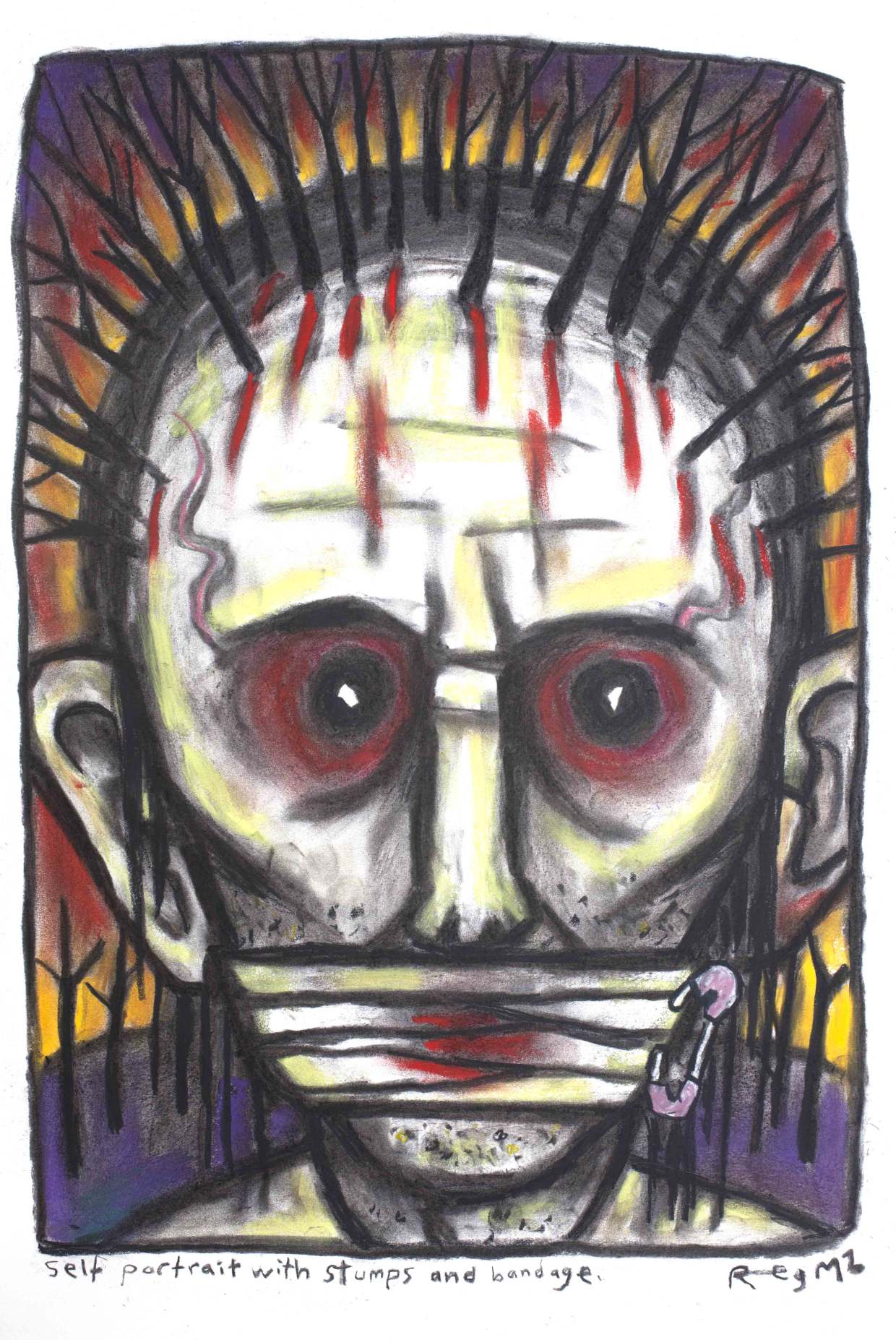
"I've done four alarming, melodramatic self-portraits with bandaged bleeding mouth and blackened stumps growing out of my head.
"It's almost so alarming it's ridiculous. It's not like I've suffered that much but it's just reflecting on the general alarm and anxiety going on worldwide."
He's also been using the lockdown time to rehearse with his brother Pete O'Doherty (also an artist and musician). Together they form the nucleus of the band Dog Trumpet and were due to tour to promote a new album; Mombassa is looking forward to their return to the stage.
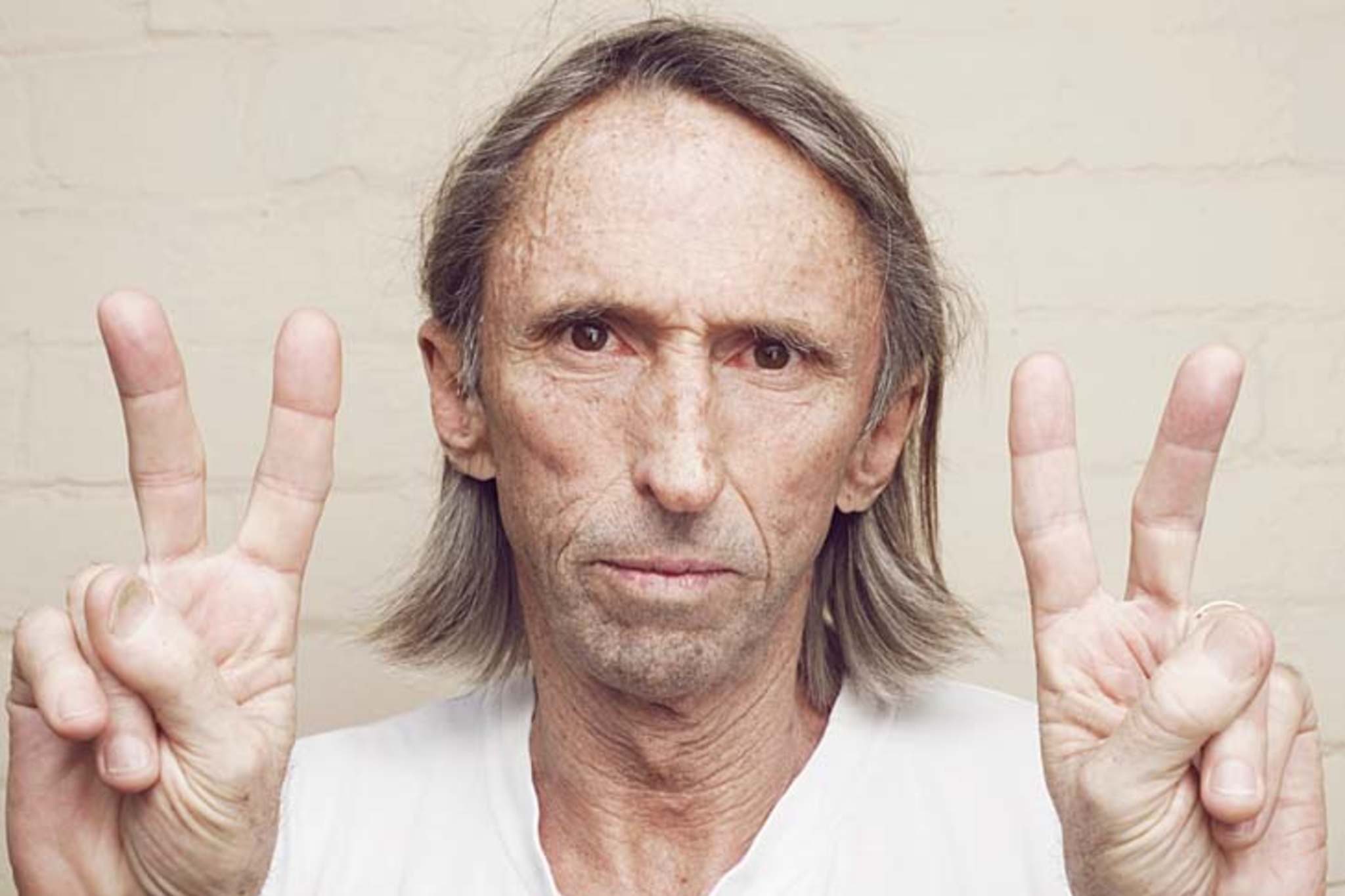
"There's nothing better than playing live if you know what you're doing and you've got a good band and an audience that appreciates it. There's something really special about that." NG
Wendy Sharpe: Quarantine dreams
Part of Sharpe's year is usually spent in Paris, a plan obviously curtailed. Magic, her major show this year, scheduled for King Street Gallery in June, has been postponed for now.
She has been working on a "corona diary", in the form of a folding book. As the impact of the virus unfolded, she was fascinated by the dreams everyone was experiencing.
"I think they call them quarantine dreams: dreams about being trapped or confined in some way, or not being able to achieve something – trying to chase someone and you can't catch them, somehow you're being stopped and it's about lack of agency."
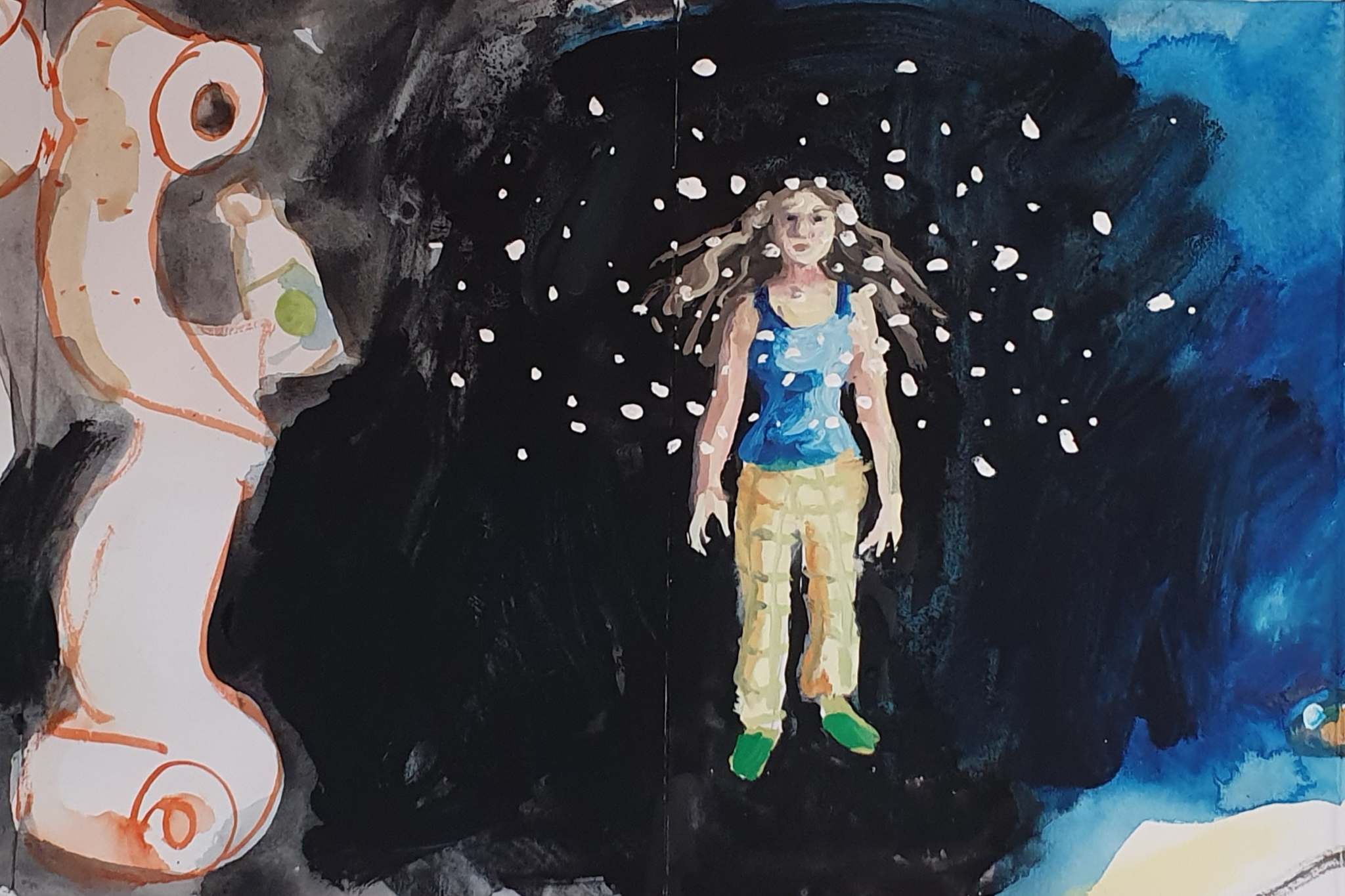
Rather than illustrating the dreams, she wanted to capture how they felt. "Everything upside down, feeling trapped, asking for something and being refused - as well as drawings of people trying to avoid each other on the street."
While she has remained productive and has the advantage of a studio separate to her house, Sharpe is working more slowly and in a micro fashion.
"I've got a painting on my easel which is a couple of metres in size, which I will get back to, but I want to make tiny things. It's unusual for me to work consistently on such tiny little things, as big as your hand or even smaller.
"Again they're on this magic theme. I'm also painting on old tins and old lamps, I've become more obsessed with doing that. I'm painting pictures on them. I feel like they symbolise things about dreams, little domestic worlds, psychological things in the background," she says.
"Even though you're managing on the surface, all of this tension and anxiety is going on and it comes out during your sleep."
Sharp is conscious the virus has manifested in different ways and that many people are in a worse position than others. "But we are all affected … It is a chance just to constantly work; there's nothing else." KO
Bill Henson: Preparation and resolution
For Henson, shutdown has meant the chance to get more organised in his warehouse studio, building new storage racks for equipment and books. "I like to do things with my hands, I think it's very good for you," he says.
Surprisingly, the acclaimed photographer reveals that he picks up a camera "very infrequently, I've never had a camera hanging around my neck," he says. "Maybe three or four times a year."
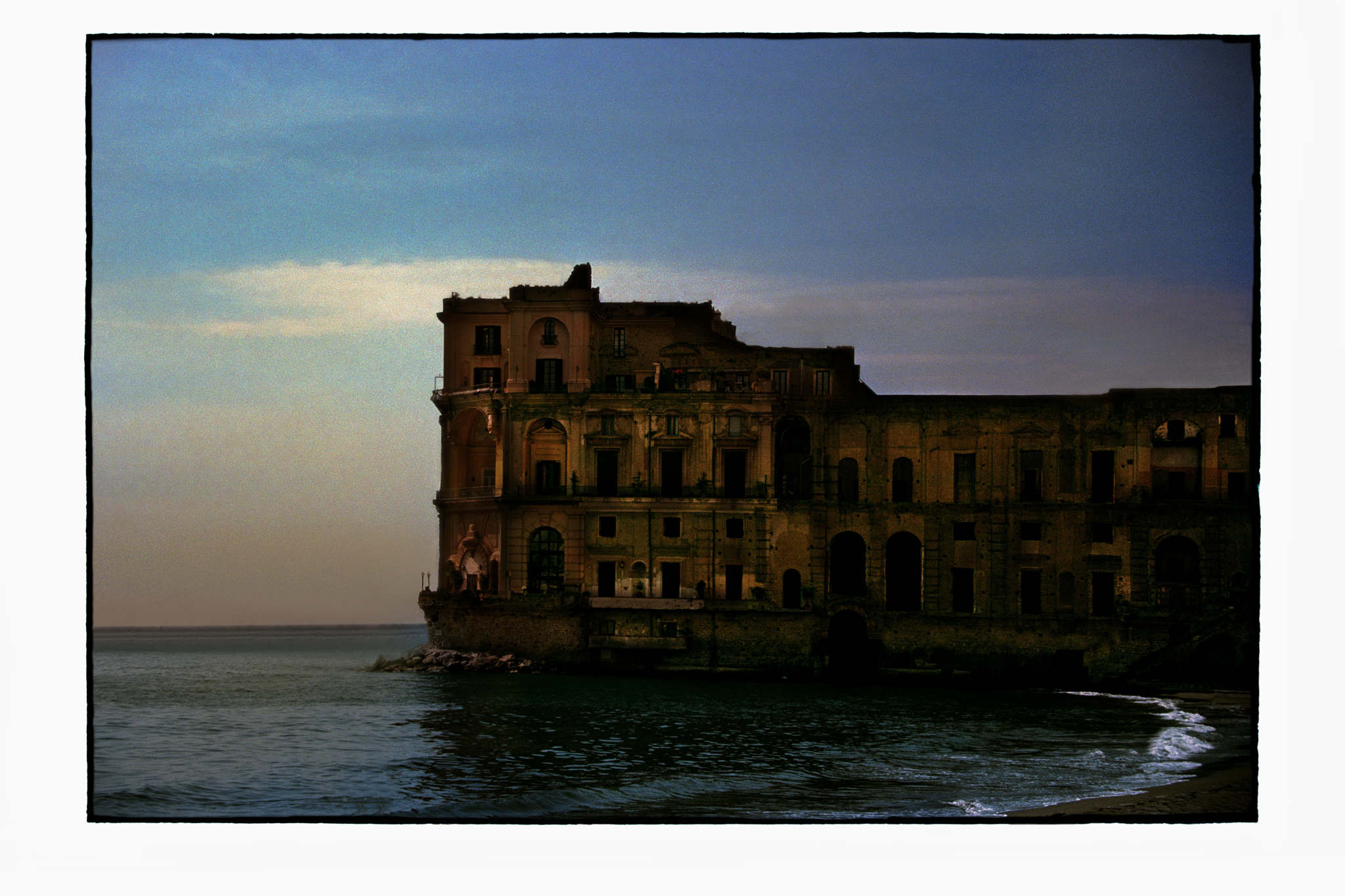
One week into COVID-19, his reorganisation led him to post a series of previously unpublished images on Instagram.
"A lot of them have been sitting in one place gathering dust. [Shutdown] pushed me to resolve some of those things. I certainly haven't made any pictures in response to this particular situation but all the pictures that I find interesting, in history or out there in the world, they all speak to the same fundamentals of life and they all appeal to our feelings about vulnerability and longing and love and anger and lust and fear and blah blah, the whole thing. It's the same whether you're looking at a Rothko or a Rembrandt. The fundamental things don't change."
On the question of work, he argues there are different ways of looking at what work is, saying that preparing is a big part of the process. One friend spends time ironing everything including the curtains while gearing up to write, "vacuuming is very common I have to tell you, a lot of people do that".
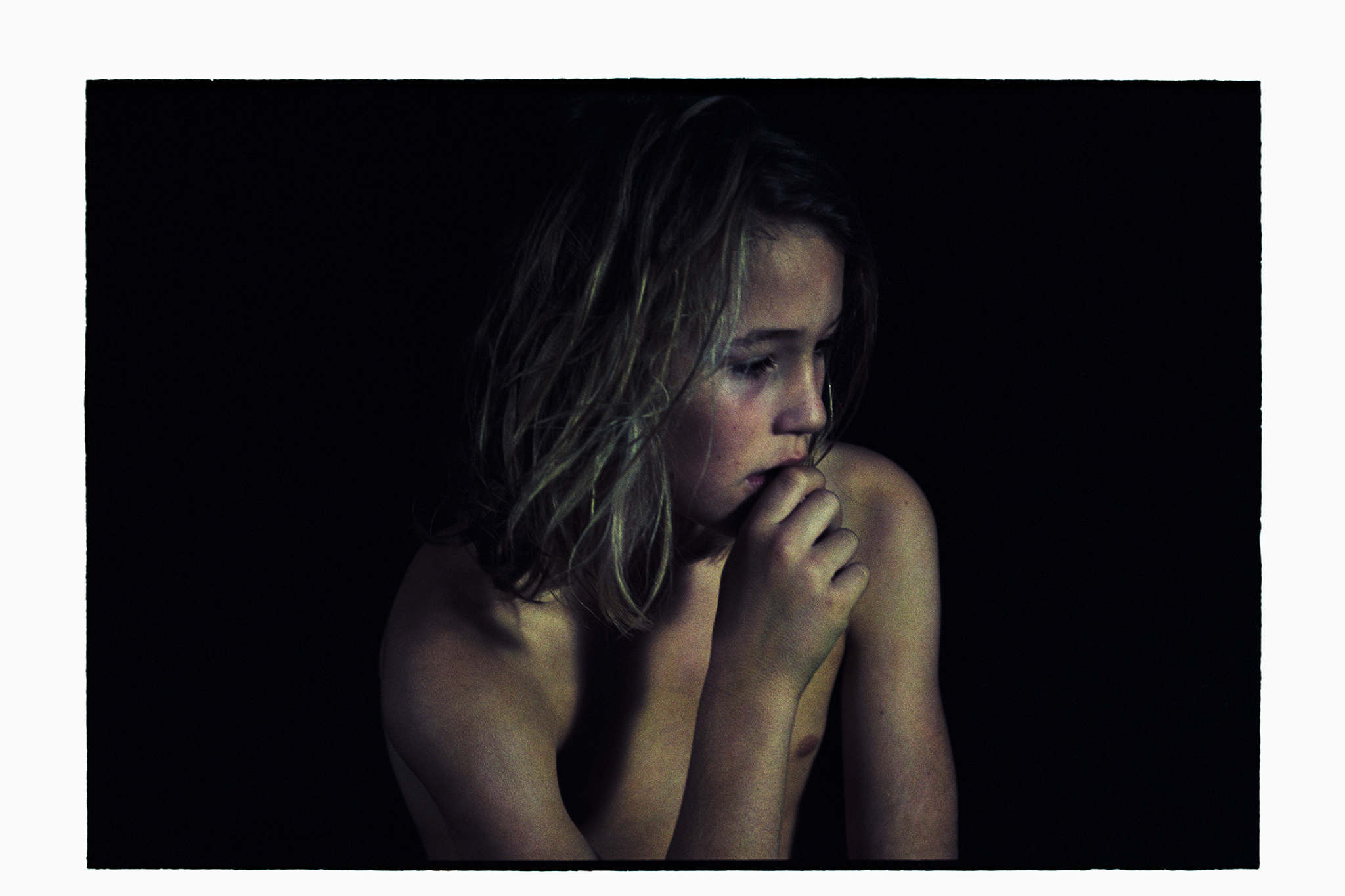
"But then other people follow the Francis Bacon thing that chaos breeds ideas, the more disorganised or chaotic or the less OCD someone is, the more productive.
"I spend 90 per cent of my time sitting in a chair, staring at pictures and listening to music. It builds up and builds up. It has to arrive at a point where you think you know what it is you need – a tree or a mountain or a person or a storm. Then you pick up a camera and go and try to find it." KO
Louise Zhang: Joy in a new medium
Zhang has been working with emerging technology studio Tactical Space Lab, recently launching an experimental virtual reality work featuring an imagined universe of Chinese pavilions set among glistening mountains, where her candy-coloured paintings flutter as banners, and 3D renderings of her slimy, blobby sculptures hover and pulsate.
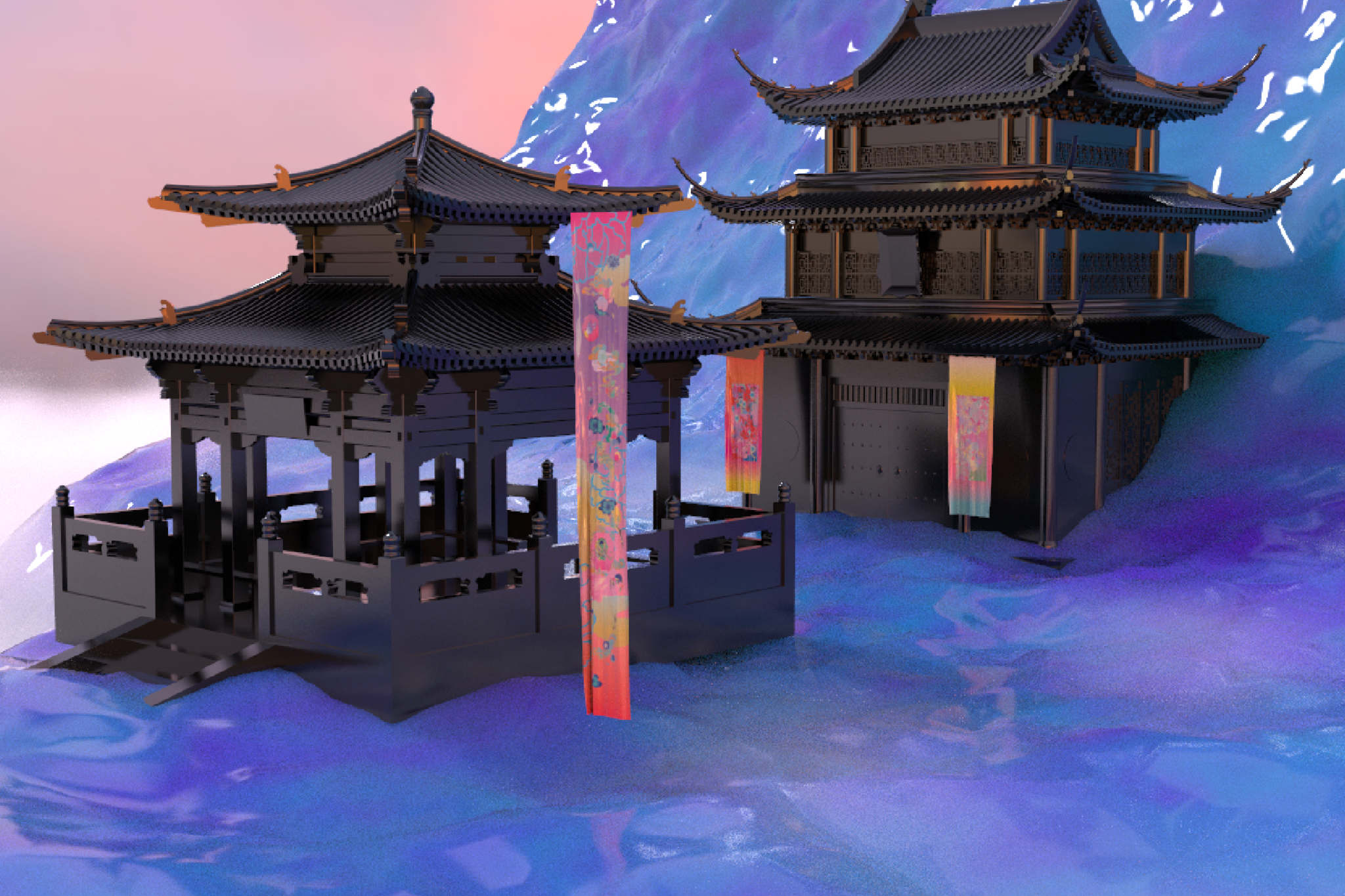
Zhang's studio outcomes were designed for viewing online without the need for a VR headset, adapting to the new (virtual) realities.
"I discovered I really enjoy using graphic and 3D programs, so I foresee my practice expanding into those realms more alongside my current choice of mediums [of painting, sculpture and installation]," she says.
While screen-based projects can continue, Zhang has lost income through having to postpone, redevelop and renegotiate work, and has been no stranger to anxiety.
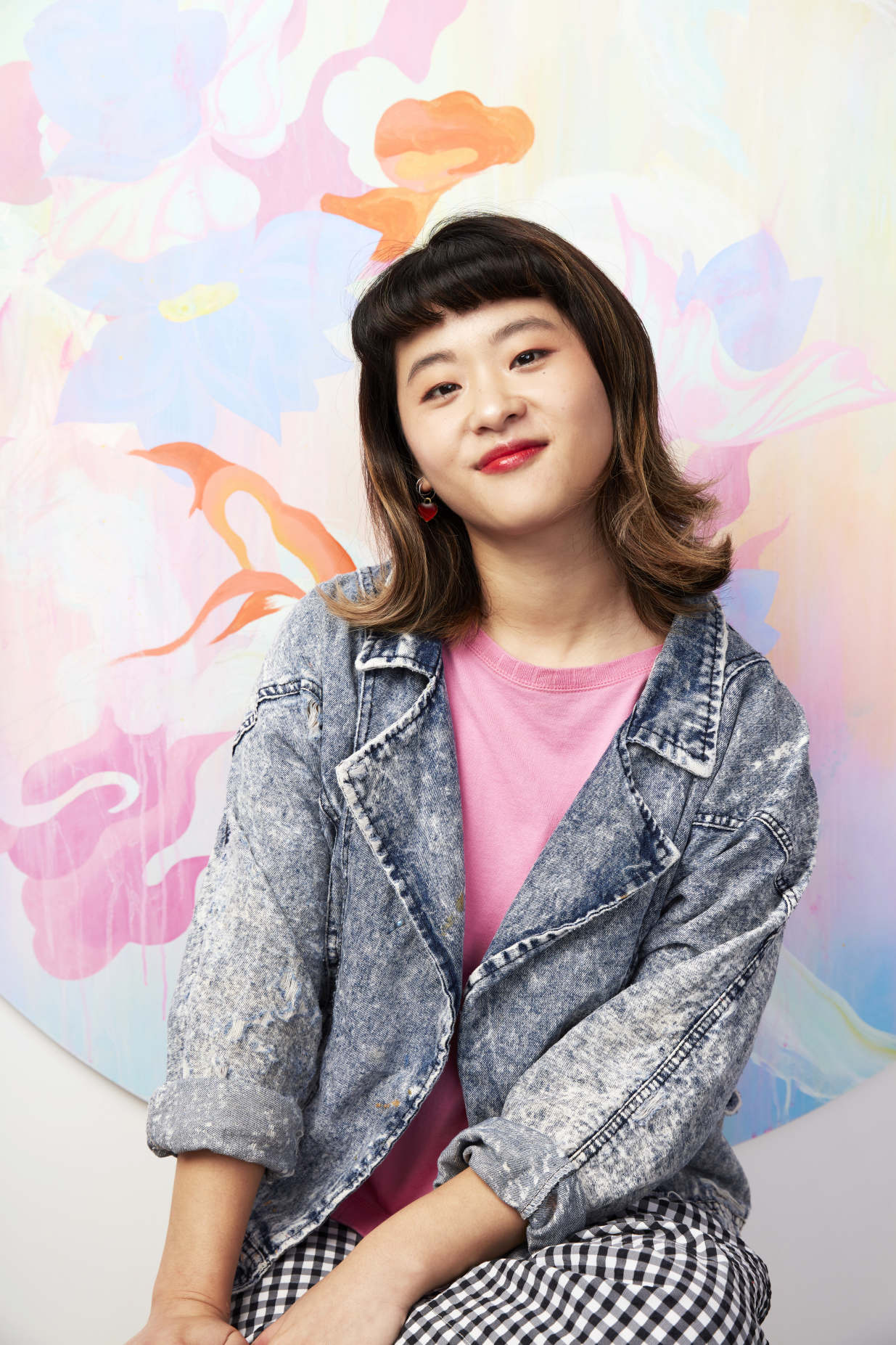
"It has really taken a toll on my mental health not being able to access my studio which is my place of safety and motivation … As things are easing up, I am able to access [it] again, which provides a sense of stability and routine."
Beyond the studio, Zhang is working with a university on an online program to "give voice and connection to international and POC [people of colour] students who are isolated, alone, unsupported, being discriminated [against] or stuck offshore unable to complete their studies. We are still developing it but it is important for us [to] support these students…during these times. They are not forgotten."
She also notes the emergence of online groups where artists support each other to understand changing laws, industry impacts, and ways to secure work and funding. "One thing I do think…artists have in common during times like this is speaking up and becoming a community." CW
Tracey Moffatt: Books and Bunnings
In early March, Tracey Moffatt was celebrating the Sydney Biennale with artists from around the world, little realising that the event - and life as we knew it - would soon be all but cancelled.
A planned trip to Mexico was a casualty of the showdown although her work has been showing online at Melbourne's Centre for Contemporary Photography and the Bass Museum in Miami.
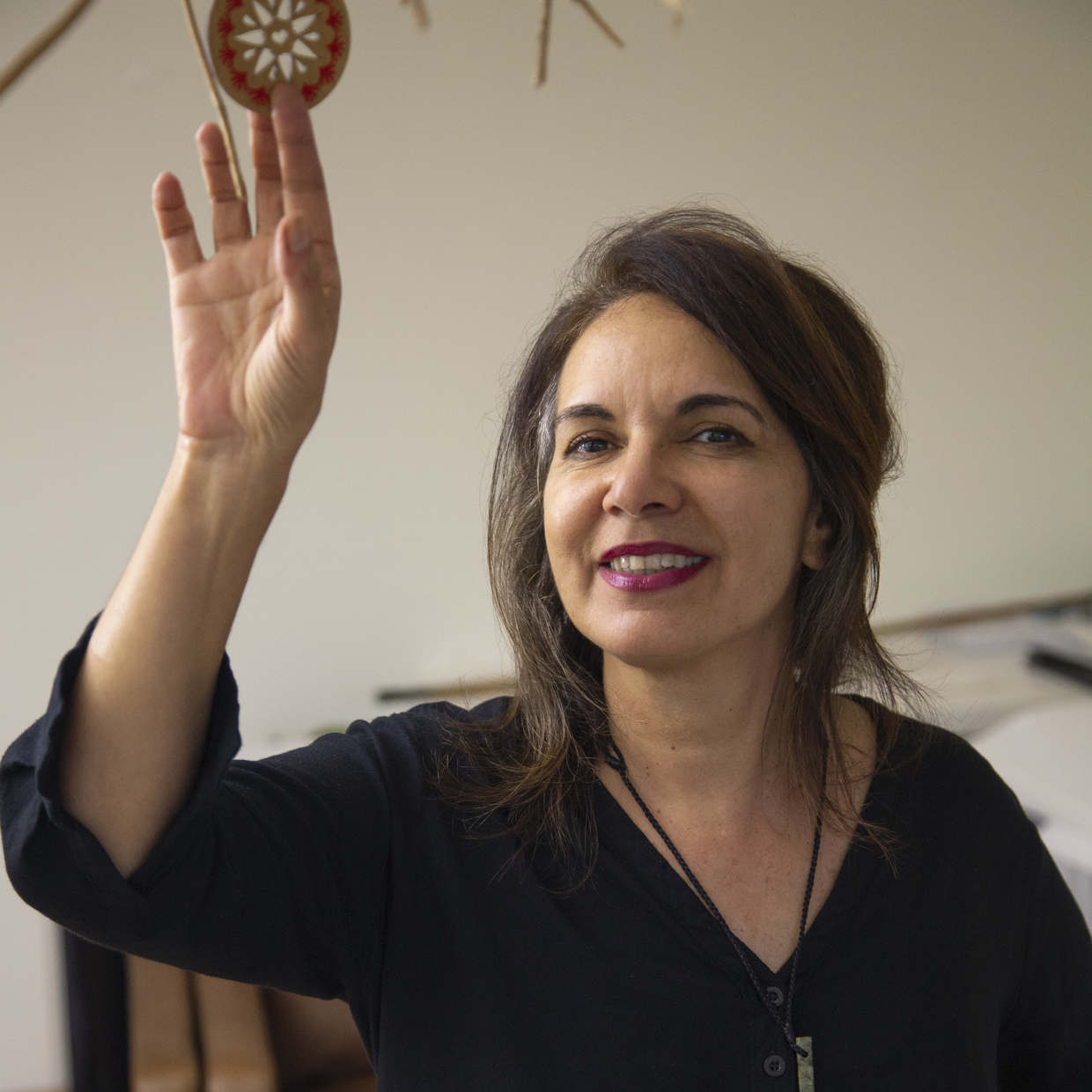
While self-isolating, she has been "as busy as anything" - not that she can reveal details of her current focus, a major public art project for Sydney. She is not allowed to discuss the work publicly at this stage but, in any event, she's superstitious. "I don't like to talk about what I'm up to too much – it loses energy."
However, she concedes that she has been making large photo test prints and sticking them up around her apartment-cum-studio in McMahons Point. "The light coming off Berrys Bay outside is so perfect."
For mental health as well as fitness, she's enjoyed socially distanced walks with friends, after which she often detours to Bunnings. "Artists are always at Bunnings, we always need stuff."
Moffatt has also been devouring biographies of other creative folk, including abstract painter Agnes Martin, op art's Bridget Riley and writers Susan Sontag and Paul Bowles.
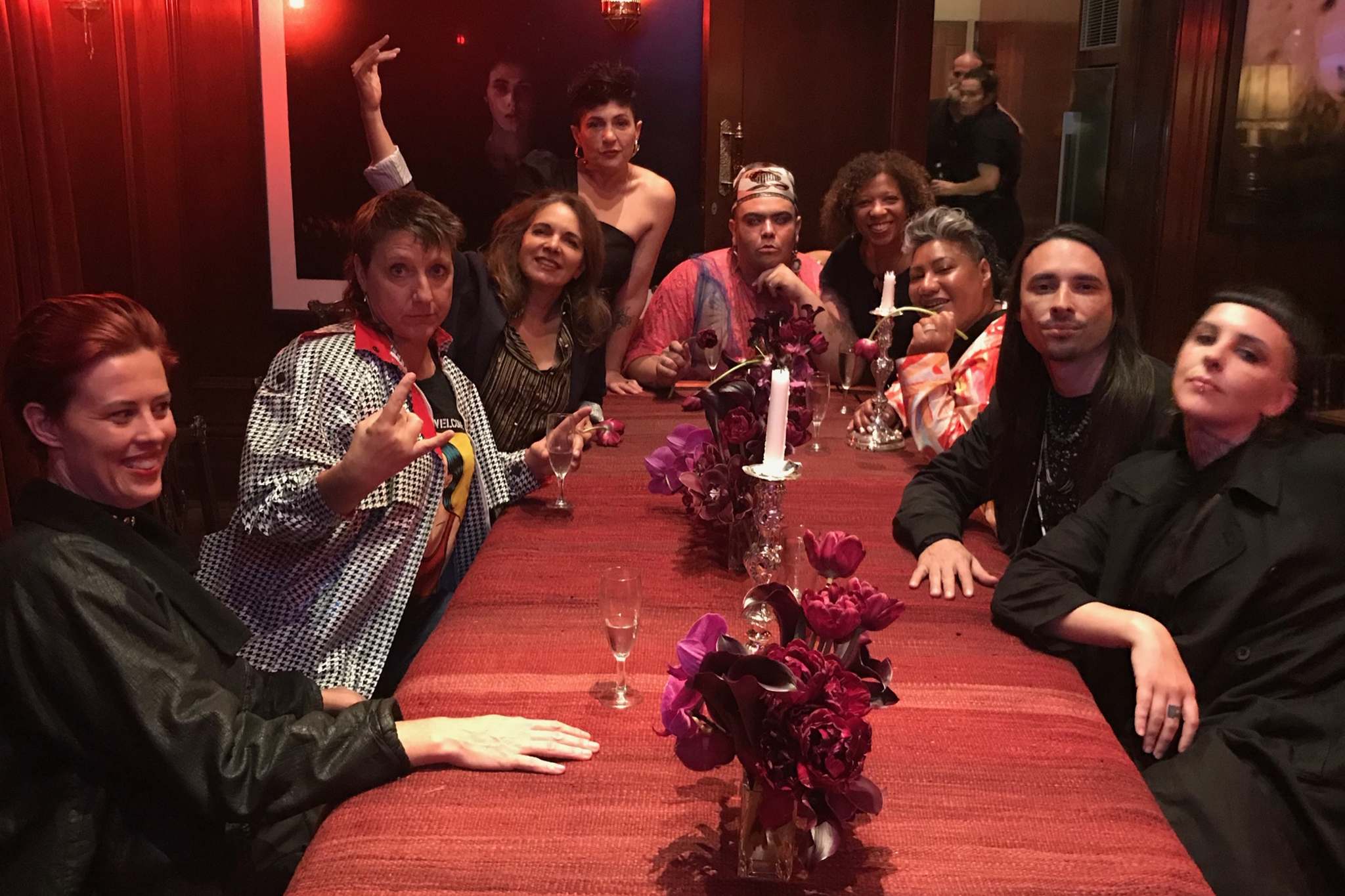
She remarks that, when living in New York, she asked composer Philip Glass about his work practices. His answer? "I work all the time."
"It's always stuck with me," she says, "I work all the time. While you're reading something, secretly watching TV series … it's so true, if you're not doing it, you're thinking about it, trying to make it happen." KO
John Olsen: Puddling around
Locked down at his home in the Southern Highlands, 92-year-old Olsen insists brightly he's "never been better".
"We've got lots of bottles of wine and we're cooking," he says. "It's brought the family together. My son [Tim] is here with me and my daughter Louise has been with me and I'm just about to go into the studio and puddle about."
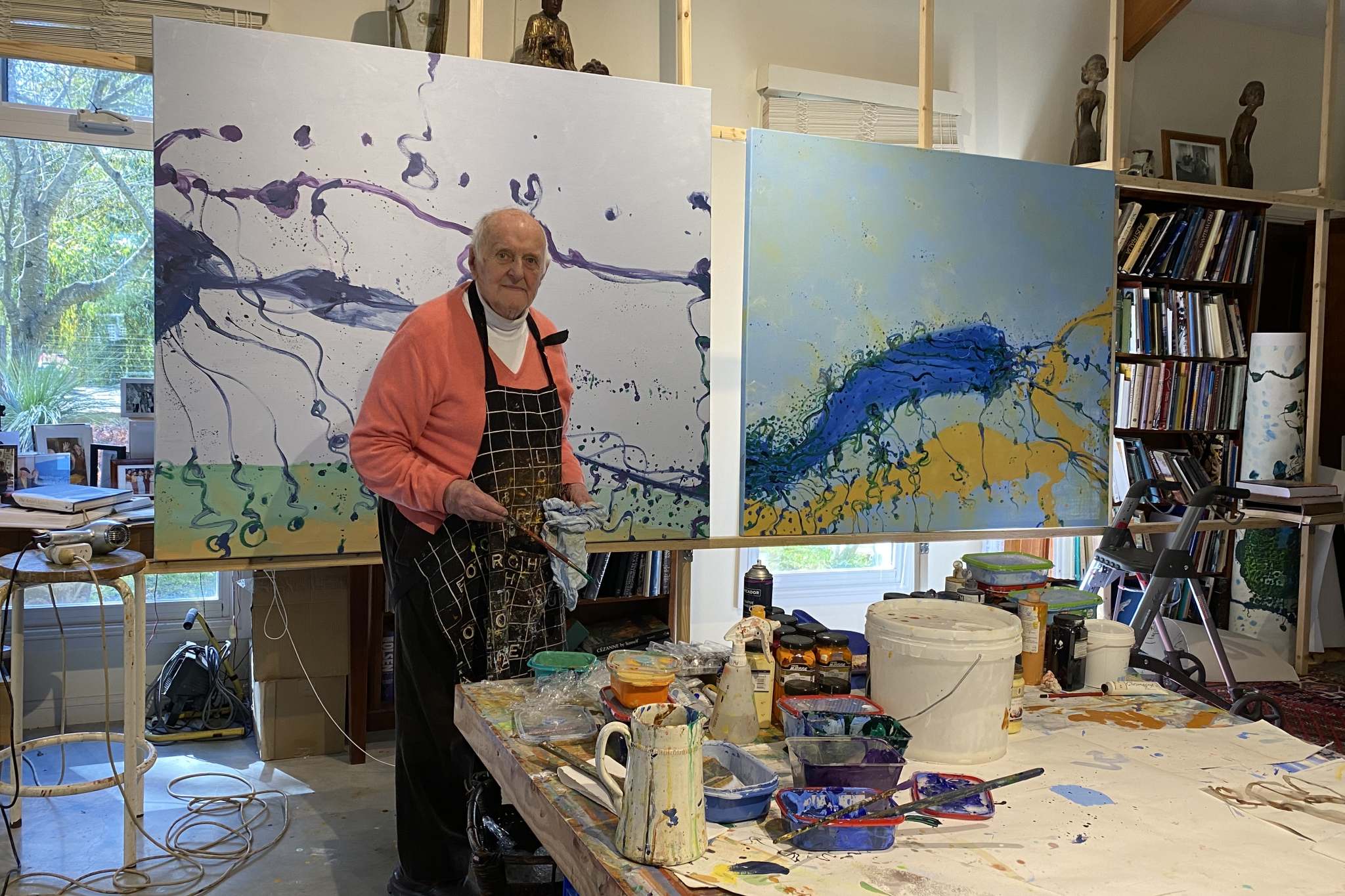
He agrees that lockdown suits the artistic temperament perfectly.
"As far as isolation is concerned, it's the natural state of being an artist," he says. "Just think of Cezanne and Renoir who decided to leave the hurly burly of Paris and go and live in Provence, which at the time was artistically like no man's land. They went there for isolation. It's just the state of being an artist, I think - and just shows you how potentially sick we are."
"Isolation ... it’s just the state of being an artist, I think - and just shows you how potentially sick we are.”John Olsen
Olsen is working on a major painting of Sydney Harbour.
"I'm here near Bowral and thinking of Sydney Harbour," he says. "Life is very curious. I'm still mindful, but from the sanctuary of the studio it is hard to believe the devastation the world is going through. I go into the studio every day and [as artist Paul Klee said] take the line for a walk." NG
Yasmin Smith: Confronting uncertainty
Smith incorporates materials gathered from particular locations into the glazes and forms of her ceramics, and lockdown has presented a chance to work on an online archive documenting the detailed cultural and scientific investigation underpinning these projects.
Site-specific research is an important component of Smith's practice but applying for international travel grants to do this has been disrupted.
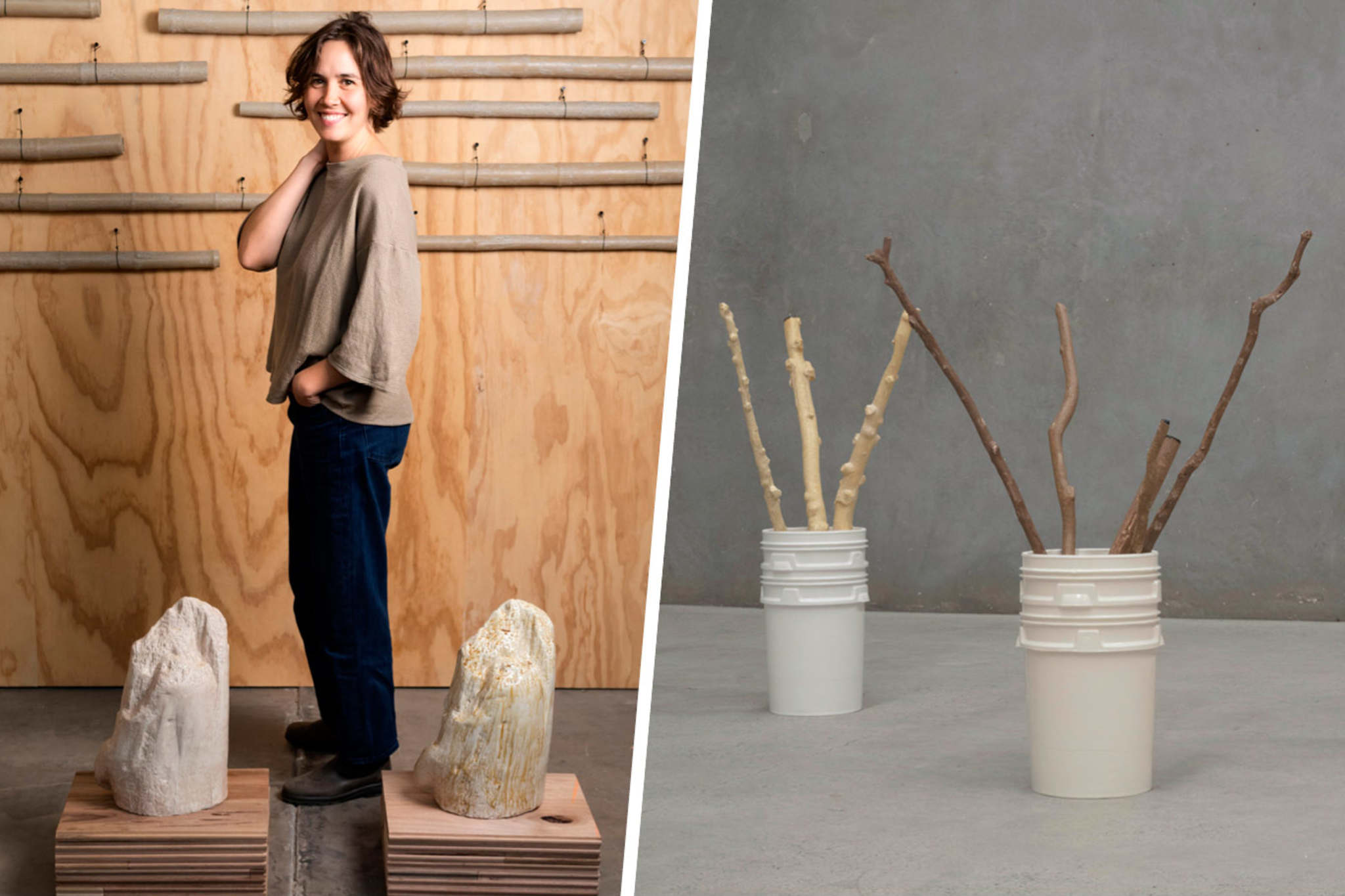
"I've … adapted my approach [into] putting together a research archive of my projects from 2014 until now, so that if I can't travel overseas I could still participate remotely at symposiums and things like that."
Smith and her partner are living with family in western Sydney, where they have been staying between research trips. After returning in December from a residency in Paris where Smith exhibited at the Pompidou Centre, they were holidaying in the south coast town of Narooma when they were evacuated along with thousands of others during the New Year's Eve bushfires. After that experience, she has felt relatively little anxiety during lockdown.
A number of shows are postponed, but two new works are on view in group show The Humanity at The Commercial in Marrickville. The exhibition has been able to be viewed by appointment and is open to the public today, the final day of the exhibition.
"It was looking like a very busy year for me, and then, suddenly … the foot's taken off the accelerator."
Smith works at Parramatta Artists' Studios Rydalmere where artists have been able to access their studios (with precautions in place).
"Of course there's been…uncertainty around if or when things would be rescheduled, but I've just kept working, with the mindset that … when things come back on, I'll have a bunch of work [ready], which is good. CW
Fiona Foley: Hoods on the kitchen table
For Foley, life in shutdown has been busy: she is juggling the final stages of her forthcoming book, based on her PhD about the history of opium in Queensland, which will be out in October, a new series of works and writing an article for an international journal.
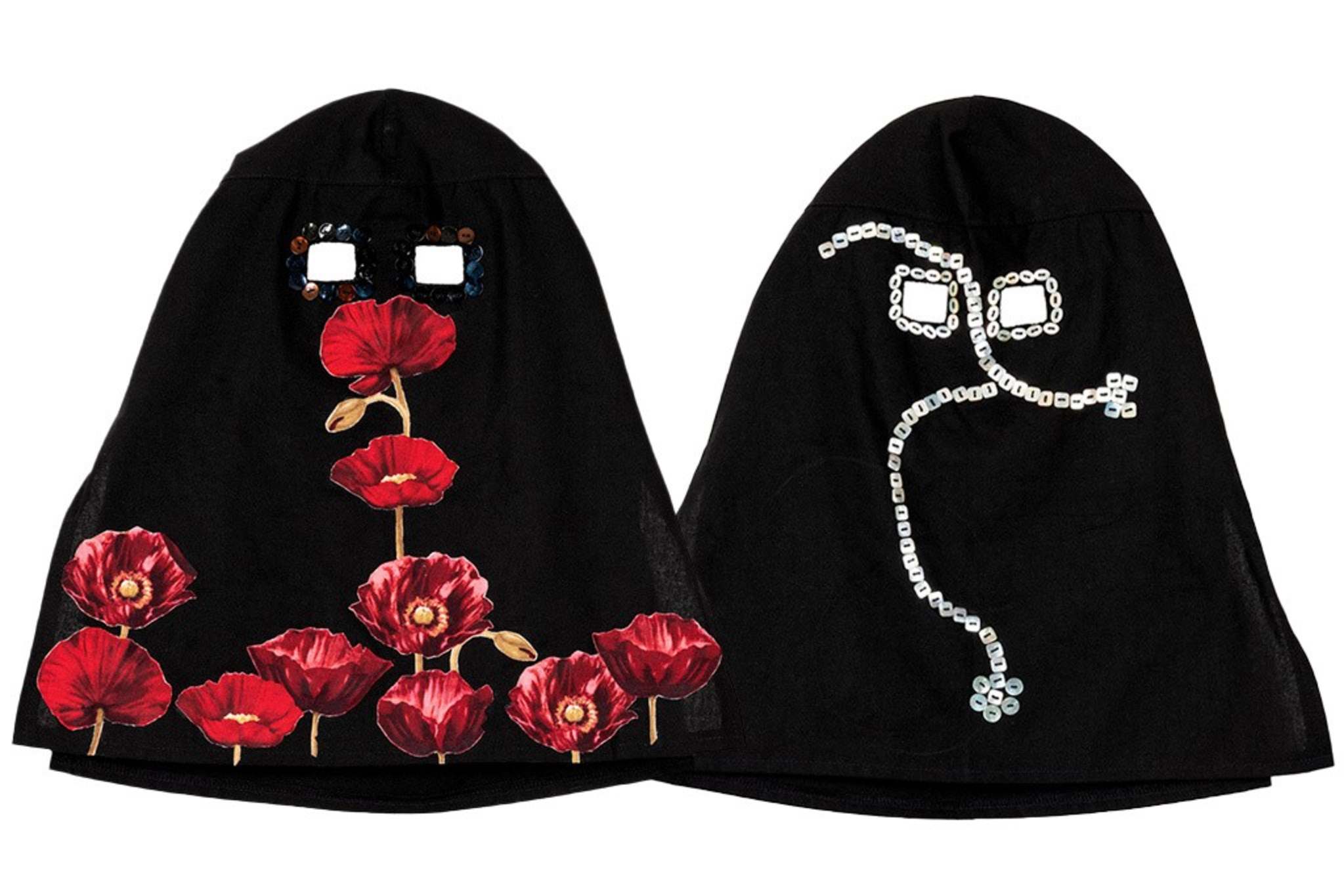
Her studio envelops her house but the kitchen table is her preferred position. The latest creations extend a theme for which Foley is well-known, using hoods. Rather than mirroring those favoured by the KKK as in her Hedonistic Honky Haters series, the latest are inspired by capital punishment.
"These are historically based on an existing hood that was used in the last hanging of an Australian."
Foley says the work is exploring the kidnapping of Aboriginal men, women and children in the 1880s, "putting them on these vessels and working them to death, plus other atrocities on the boats".
They were basically slaves, forced to work. The pearl shells were later used to make buttons, which the women sewed on garments."These are all hidden histories that I put in the public arena."
Her book looks at a particular piece of legislation, The Aboriginals Protection and Restriction of the Sale of Opium Act 1897.
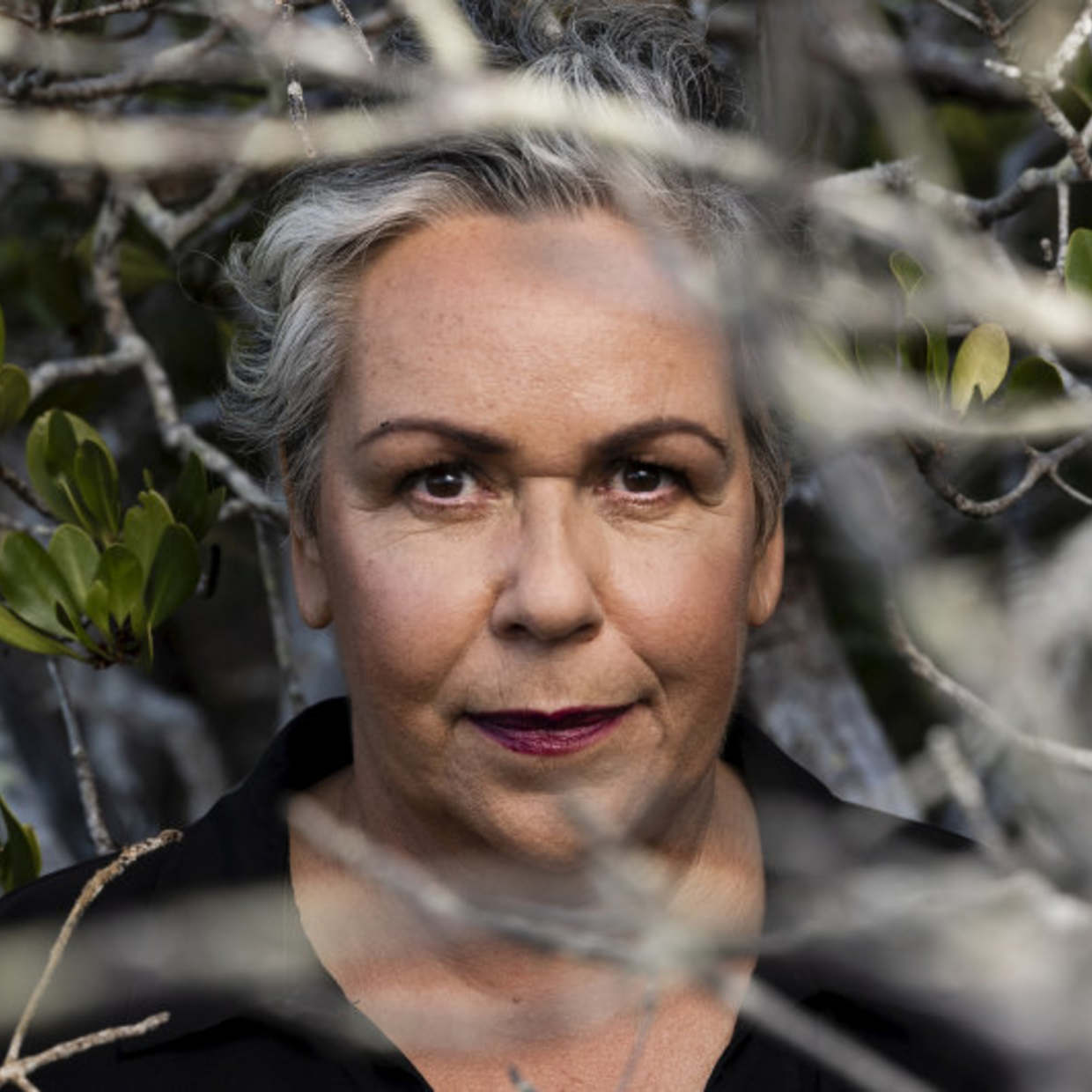
The dust from opium smoked by Westerners and Chinese was deemed an appropriate wage for Aboriginal workers. Part of Fraser Island, where Foley's family are from, was used to quarantine and remove Aboriginal people who became addicted.
"It was to try to stop them using and detox through isolation. It was a catchall for corralling Aboriginal people and starting to control their lives on a day-to-day basis." KO
Yhonnie Scarce: Explosive research and scientific inquiry
One week into a six week residency in Birmingham when the virus hit, Yhonnie Scarce returned to Melbourne and quarantined herself at home for 14 days. She was in the UK to investigate scientists who in the 1930s were researching nuclear energy, which ultimately led to the atomic bomb and testing where she was born in Woomera, South Australia. Some of her research-intensive work has been possible during the shutdown but she looks forward to resuming the residency when possible.
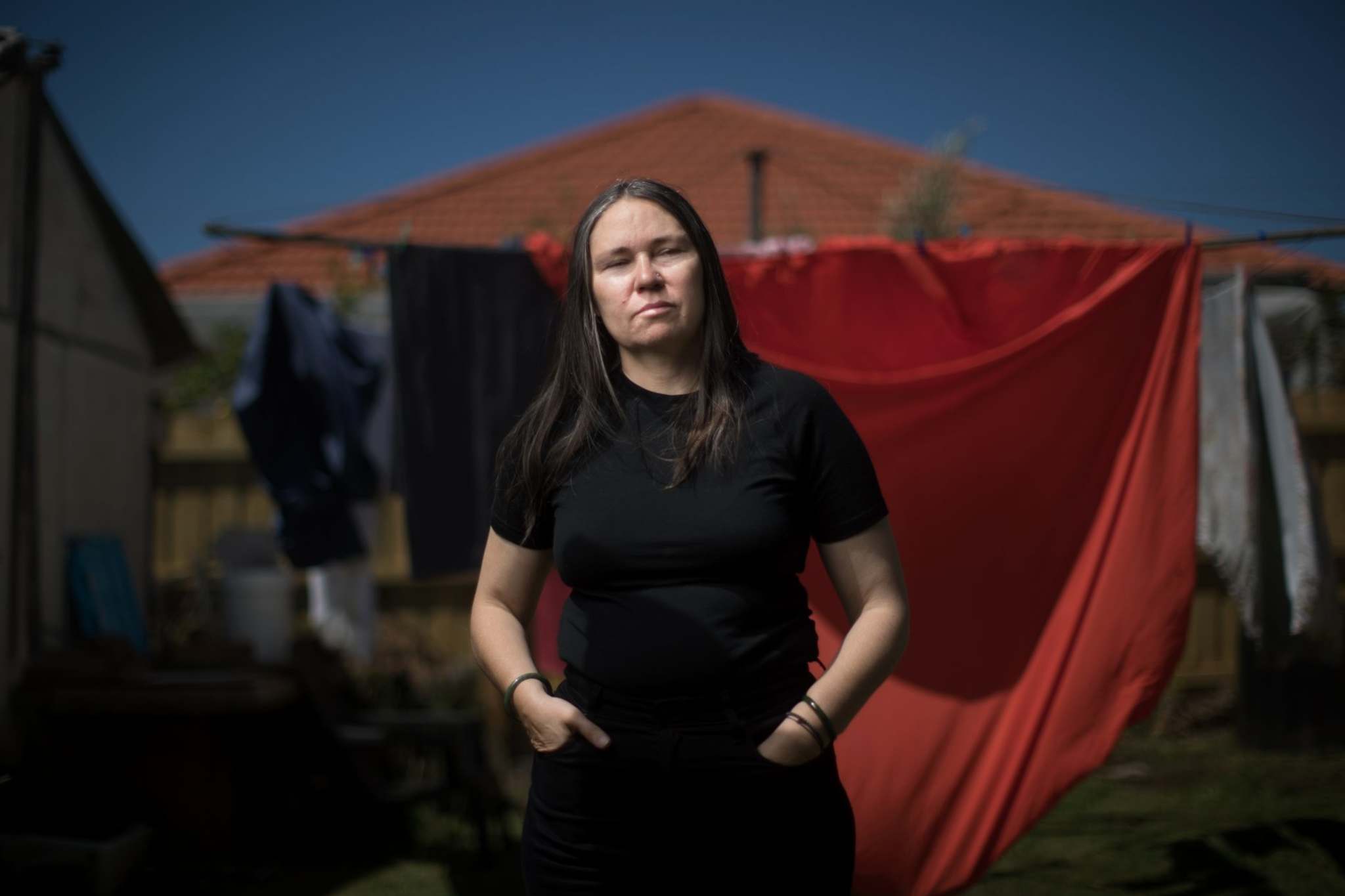
Her latest works are smaller than those she has created in recent years, including the massive Absence at the NGV currently. “It’s an interesting process for me, taking my time, because I’m not a scientist, trying to figure out to do it perfectly visually is an important part of this process.”
One work she’s devising – using her trademark glass - will reflect the impact of the testing on bush food, showing “craters within a bush banana or a yam or a bush plum”.
It will represent the decimation of that country and the impact on Aboriginal people, she says, and she wants to mimic the nuclear explosion inside one of them.
For her the lockdown has been a blessing and a curse. “When I’m working out this process I tend to leave Melbourne… I don’t always have four walls around me. It has frustrated me a little bit - I’ve had to retrain my brain.”
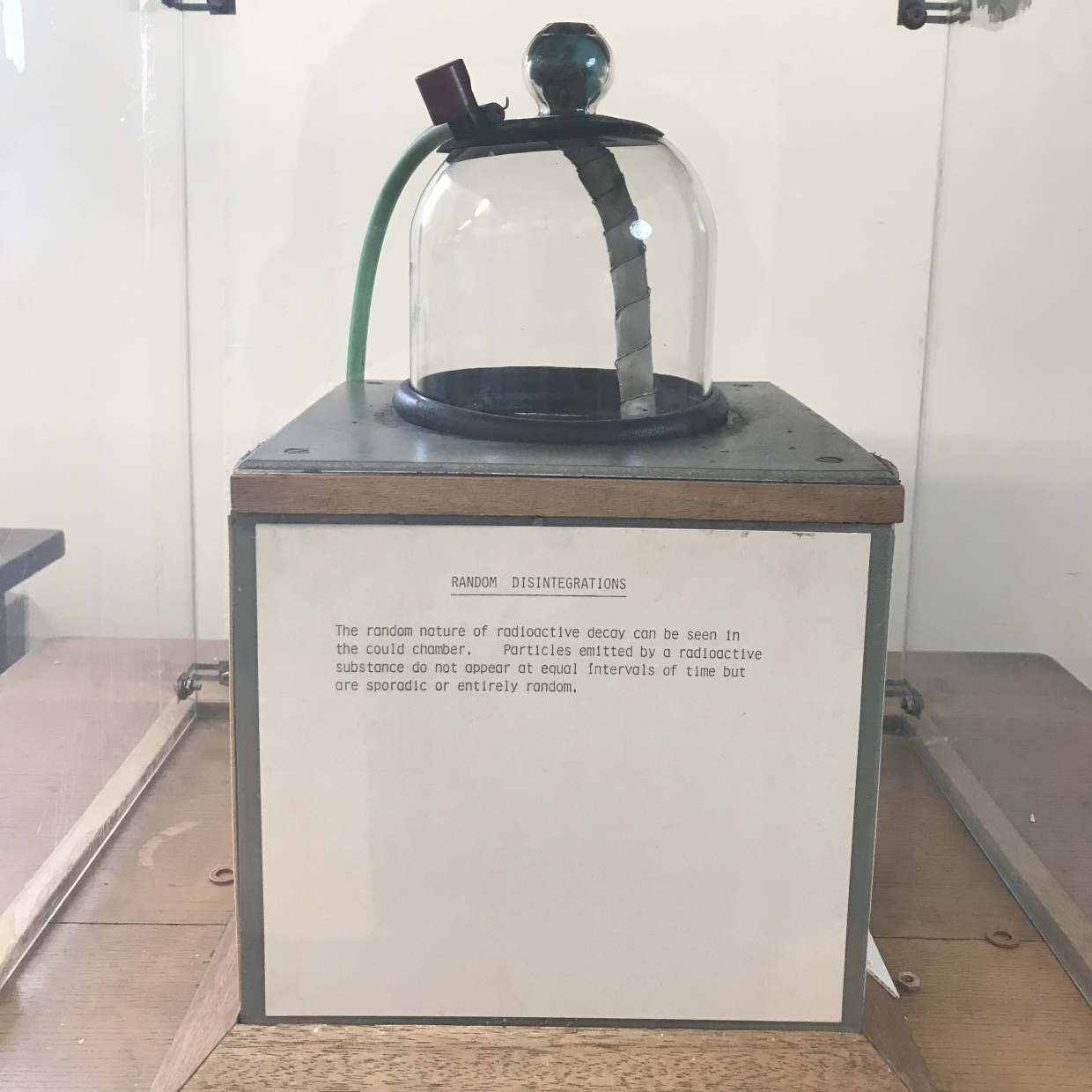
She often works at the studio at Adelaide’s Jam Factory, where her glass works are hand-blown, or out bush. “I hope it changes [the way I work] but I will remain a traveller, it is who I am and what my practice needs. Once everything calms down I will rethink how I travel and maybe that will change.”
“I’ve loved seeing how the air has changed and the city is not so hazy with smog, the rain seems cleaner. That has been beautiful to watch.” KO
Writer Chloe Wolifson is supported by the Copyright Agency’s Cultural Fund and the Judith Neilson Institute for Journalism and Ideas.